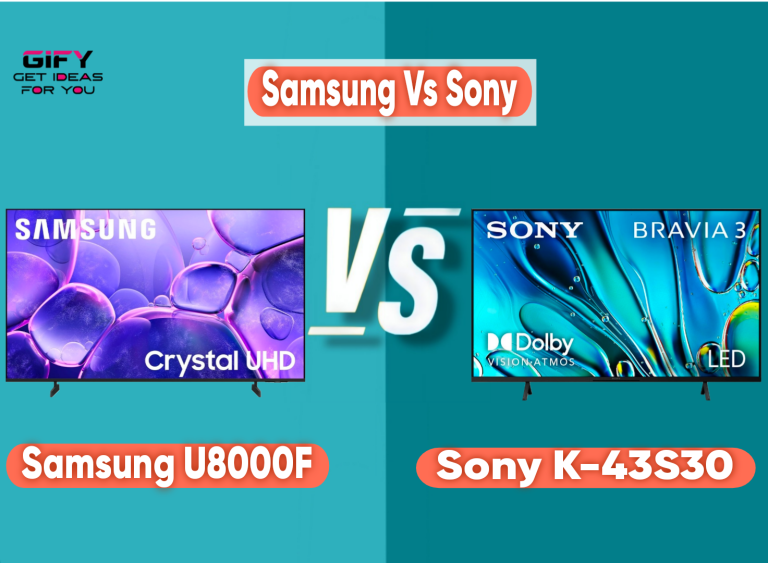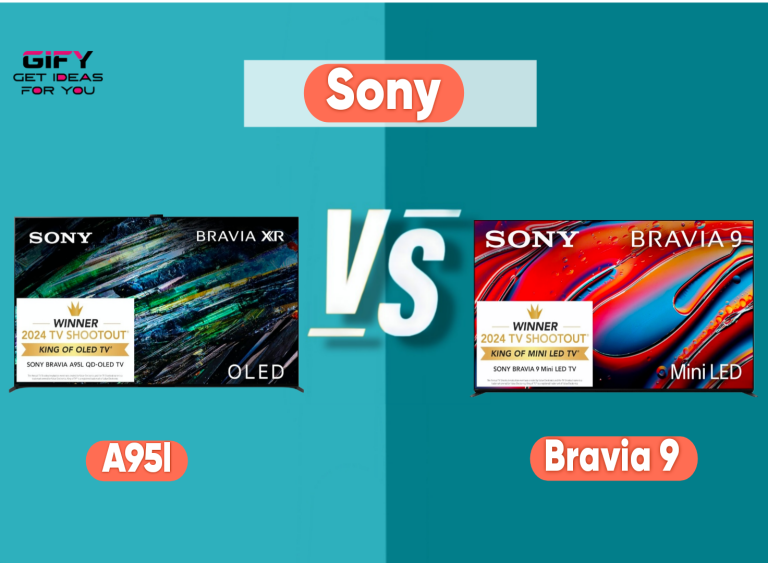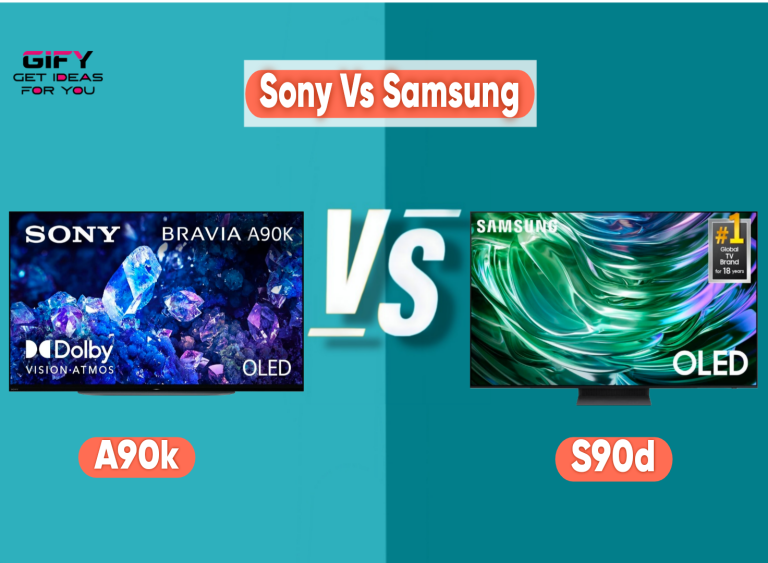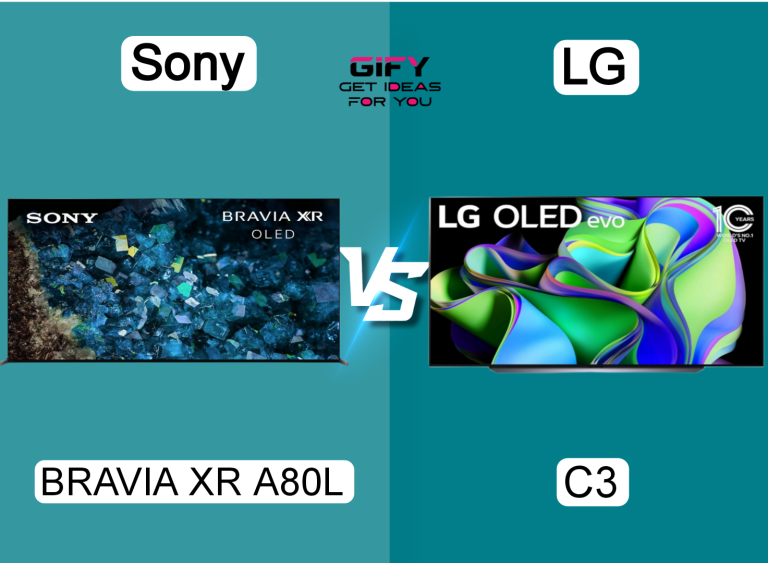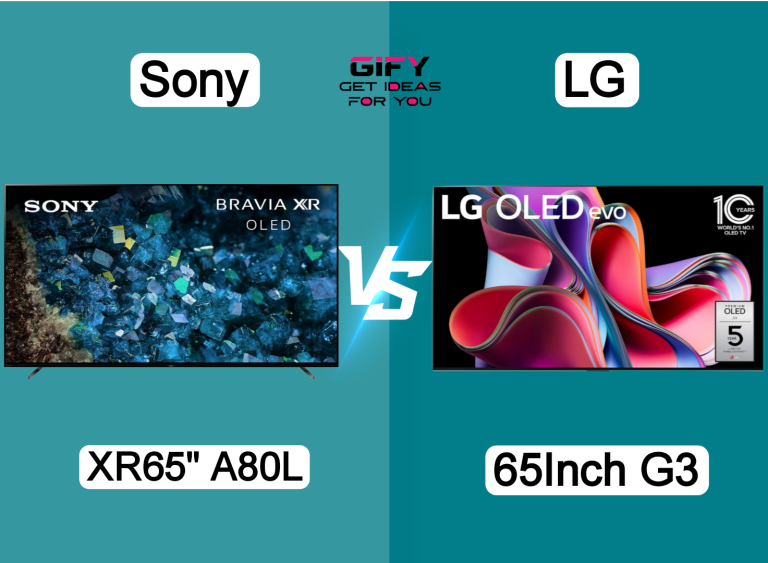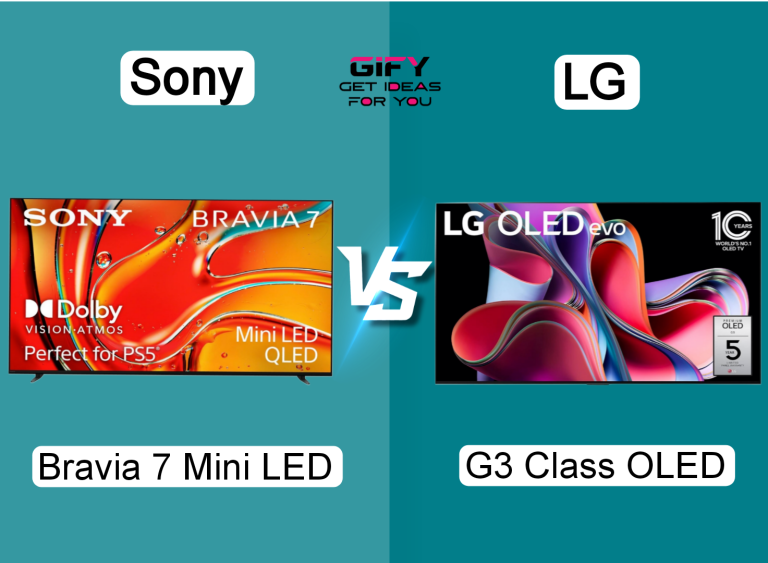Sony bravia 8 vs Samsung s90d is a battle between two of the most advanced OLED TVs in 2025. Both models bring cutting-edge display technologies, powerful processors,
and immersive entertainment experiences. This detailed comparison explores every aspect, from color accuracy and gaming features to sound quality and smart features, to help you decide which premium OLED TV suits your home best.
The Sony Bravia 8 continues Sony’s legacy of cinematic excellence, focusing on precision, realism, and creator-intended picture quality. On the other hand, the Samsung S90D pushes innovation with high brightness,
Pantone-validated colors, and next-gen gaming support. Choosing between these two OLED giants depends on what you value most — cinematic immersion or gaming performance. Let’s break down the differences in detail.
Common Features
Both the Sony Bravia 8 and Samsung S90D share several high-end features designed to deliver exceptional image and audio quality. Here’s what they have in common:
- Panel Technology: Both TVs use OLED panels that produce perfect blacks and infinite contrast by controlling each pixel individually.
- Peak Brightness: High brightness levels ensure excellent visibility in both dark and bright rooms, enhancing HDR performance.
- Color Accuracy: Each model offers outstanding color precision with wide color gamuts, producing lifelike and vivid visuals.
- Image Processing: Advanced processors optimize contrast, clarity, and motion for a natural, realistic picture.
- HDR Support: Both support premium HDR formats like Dolby Vision and HDR10+ for deeper contrast and better tone mapping.
- Gaming Features: Features like VRR, low latency, and 4K 120Hz refresh rates make them perfect for next-gen consoles.
- Smart TV OS: Each offers a feature-rich Smart OS—Google TV for Sony and Tizen for Samsung—with access to major streaming platforms.
- Audio: Immersive audio systems powered by Dolby Atmos and advanced sound processing create a surround sound experience.
Both models target high-end home entertainment enthusiasts who want premium performance for streaming, sports, and gaming. While their shared strengths create an even playing field, their unique approaches to processing and color management make a big difference in real-world performance.
Sony Bravia 8 – OLED 4K Ultra HD TV BRAVIA.
The Samsung S90D stands as one of Samsung’s most advanced OLED TVs, offering a blend of brightness, speed, and smart innovation. Its OLED panel is Pantone-validated,
ensuring industry-grade color accuracy that captures every detail with precision. Combined with its OLED HDR Plus technology, this TV delivers striking contrast, deep blacks, and intense highlights that make every scene pop.
Samsung’s Real Depth Enhancer adds a new layer of realism by adjusting foreground contrast, mimicking how the human eye perceives depth. The result is a lifelike image that draws you into the content.
Its 4K AI Upscaling engine, powered by the NQ4 AI Gen2 processor, transforms HD content into near-4K quality, offering sharp detail and enhanced texture even on non-4K sources.
Motion Xcelerator 144Hz technology ensures silky-smooth motion, making it a dream for gamers and sports fans alike. Whether you’re watching fast-paced action movies or playing high-speed games,
the visuals remain crisp and blur-free. Its AI-driven processor also enhances Dolby Atmos and Object Tracking Sound Lite, delivering 3D surround audio that follows the action on-screen.
The Tizen operating system provides a clean, responsive interface with quick access to streaming apps, workouts, games, and smart home integrations.
The Samsung Gaming Hub further enhances the experience by allowing cloud-based gaming without a console. Players can stream games directly from the TV, making it an all-in-one entertainment system.
What I Like
The S90D stands out with its high brightness, 144Hz refresh rate, and Pantone-validated color accuracy. Gaming performance is top-tier, and Real Depth Enhancer gives a cinematic sense of depth that few competitors match.
Dolby Atmos with Object Tracking Sound Lite offers dynamic, immersive sound without needing extra speakers. The Tizen OS is responsive, and the AI processor’s optimization feels seamless across apps and content types.
What Could Be Better
Although Samsung’s OLED is incredibly bright, its tendency to slightly oversaturate colors may not appeal to purists who prefer Sony’s natural tone.
The absence of Dolby Vision support may also be disappointing for some movie enthusiasts. Also, while cloud gaming is innovative, it depends heavily on a strong internet connection for a smooth experience.
Overall Opinion
The Samsung S90D is a futuristic OLED TV built for gamers and tech lovers. It excels in performance, speed, and innovation, delivering an incredibly bright, colorful, and fluid picture.
It’s ideal for users who prioritize gaming or prefer vibrant visuals over film-grade accuracy. The combination of a 144Hz display, AI upscaling, and surround sound technology makes it one of the most exciting OLED TVs of the year.
Head-to-Head Comparison
Comparing the sony bravia 8 vs samsung s90d reveals two premium OLED experiences aimed at different audiences. Both deliver exceptional performance, but their strengths vary depending on what you value most.
Picture Quality: Sony’s Bravia 8 emphasizes accuracy and depth, offering a creator-intended image ideal for movie lovers. Samsung’s S90D, on the other hand, pushes brightness and
vividness further, making HDR scenes burst with energy. Those who prefer natural tones will lean toward Sony, while those who love bold and dynamic visuals will prefer Samsung.
Gaming: Samsung wins for gaming versatility, offering a 144Hz refresh rate and advanced gaming hub with cloud capabilities. Sony still provides excellent gaming performance, especially with PlayStation 5 integration, but caps at 120Hz.
Smart OS: Sony’s Google TV feels refined, organized, and loaded with content recommendations. Samsung’s Tizen OS offers more interactivity and flexibility,
integrating gaming and lifestyle apps seamlessly. Both are excellent, but Google TV may feel more intuitive for Android users.
Audio: Sony benefits from Dolby Atmos, DTS:X, and IMAX Enhanced support, producing cinema-level sound. Samsung’s Object Tracking Sound Lite gives directional audio effects that feel immersive, but Sony’s implementation still sounds fuller in complex soundscapes.
Value for Money: Both are premium-priced OLED TVs, yet Samsung adds more features for gamers, while Sony delivers more accurate visuals for cinephiles. The choice depends on whether your focus is gaming performance or cinematic realism.
In essence, Sony Bravia 8 is ideal for movie enthusiasts who prioritize image accuracy and immersive sound, while Samsung S90D is perfect for gamers and those who love vibrant, dynamic visuals.
📌 Read More Related Articles.
- Samsung vs Sony TV Comparison: The Battle of 2 products Clarity, Design & Smart Features
- LG Flex vs LG G2: Battle of Innovation and Performance
FAQs
Is the Sony Bravia 8 brighter than the Samsung S90D?
The Samsung S90D typically achieves higher peak brightness levels, making it better for bright rooms. Sony Bravia 8 focuses more on balanced contrast and realistic brightness levels.
Which TV is better for gaming, Sony Bravia 8 or Samsung S90D?
The Samsung S90D offers a 144Hz refresh rate and Gaming Hub, giving it an edge for competitive gaming. Sony Bravia 8 is still excellent for PlayStation 5 owners with optimized HDR and Auto Genre modes.
Does Samsung S90D support Dolby Vision?
No, Samsung TVs do not support Dolby Vision. They use HDR10+ instead. Sony Bravia 8 supports Dolby Vision for enhanced HDR performance.
Which Smart TV platform is better?
Google TV on Sony provides a more content-focused interface, while Samsung’s Tizen OS is better for gaming and smart home integration. Both are smooth and reliable.
Do both TVs have good sound quality?
Yes, both feature Dolby Atmos technology, but Sony’s acoustic surface design and IMAX Enhanced support create a richer audio environment.
Which one should I buy?
Buy the Sony Bravia 8 if you want cinematic accuracy and deep blacks. Choose the Samsung S90D if you prioritize gaming speed, brightness, and punchy visuals.
Conclusion
The sony bravia 8 vs samsung s90d comparison showcases two flagship OLED TVs designed for different types of viewers.
Sony’s Bravia 8 offers filmmaker-level precision, perfect for those who crave authentic cinematic experiences. Samsung’s S90D delivers unmatched brightness and smoothness,
perfect for gaming and lively visual impact. Both are premium choices that redefine OLED performance, ensuring exceptional viewing for years to come.




